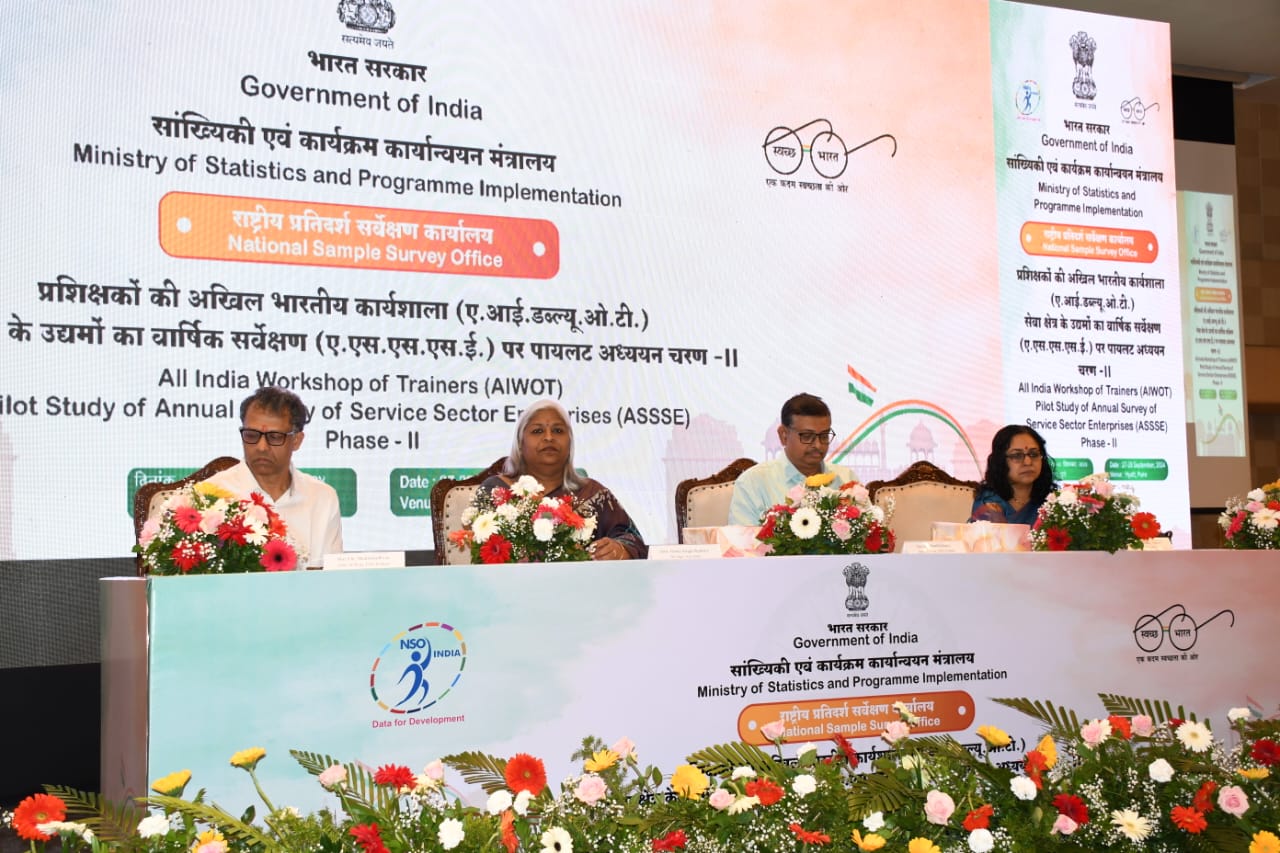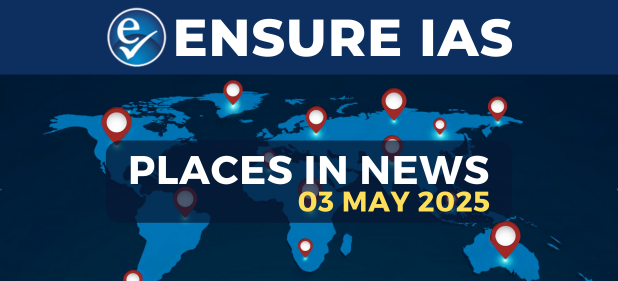- Courses
- GS Full Course 1 Year
- GS Full Course 2 Year
- GS Full Course 3 Year
- GS Full Course Till Selection
- CSAT
- 5 LAYERED ARJUNA Mentorship
- Public Administration Optional
- Online Program
- GS Recorded Course
- NCERT (Recorded 500+ Hours)
- Polity Recorded Course
- Geography Recorded Course
- Economy Recorded Course
- AMAC Recorded Course
- Modern India, Post Independence & World History
- Environment Recoded Course
- Governance Recoded Course
- Science & Tech. Recoded Course
- International Relations and Internal Security Recorded Course
- Disaster Management Module Course
- Ethics Recoded Course
- Essay Recoded Course
- Current Affairs Recoded Course
- ABOUT US
- OUR TOPPERS
- TEST SERIES
- FREE STUDY MATERIAL
- VIDEOS
- CONTACT US
Pilot Study on Annual Survey of Services Sector Enterprises (ASSSE)
Pilot Study on Annual Survey of Services Sector Enterprises (ASSSE)

- On 30 April 2025, the Ministry of Statistics and Programme Implementation (MoSPI) released the Technical Report of the Pilot Study on the Annual Survey of Services Sector Enterprises (ASSSE).
- The pilot study lays the foundation for a comprehensive, annual statistical survey of India’s incorporated service sector, using the GSTN database.
- The full-scale survey is expected to begin in January 2026, covering sectors like construction, trade, IT, education, healthcare, transport, and more.
Importance of the Services Sector in India
|
Aspect |
Details |
|
Contribution to the Economy |
- Share in GVA: ~55% in FY 2024–25, up from 50.6% in FY14 - Growth Rate: 7.6% in FY24, showcasing resilience amid global economic challenges |
|
Employment |
- Employs ~30% of India’s workforce - Includes IT, finance, healthcare, education, tourism, retail - Major driver of urban employment |
|
Global Trade |
- Services exports (Apr–Dec 2024): USD 280.94 billion - India ranks 2nd globally in telecom, computer, info services with 10.2% share |
|
Foreign Direct Investment |
- FDI Inflows (2000–2024): USD 116.72 billion - Accounts for 16% of total FDI into India |
|
Integration with Other Sectors |
- Servicification of manufacturing: Integration of services like logistics, design, after-sales - Enhances productivity and value-addition |
|
Urbanization & Digital India |
- Drives Digital India via FinTech, e-governance, digital payments - Supports Smart Cities Mission (e.g., urban mobility, waste mgmt, ICT) |
Background and Context of ASSSE
What is ASSSE?
- A proposed annual survey to collect granular economic data from incorporated service sector enterprises (registered under the Companies Act or LLP Act).
- Aimed at addressing the lack of comprehensive data on India's formal service economy.
Objectives of the Pilot Study
- Test feasibility of GSTN as a sampling frame.
- Assess availability of enterprise-level data from:
- Profit & Loss accounts
- Balance Sheets
- Labour registers
- Test the clarity and usability of the questionnaire and instructions.
- Analyze response rates and cooperation levels.
- Evaluate CAPI technology for real-time digital data collection.
Survey Design and Methodology
- Enterprise Approach
- One GSTIN = one enterprise in a state.
- Data was collected from the principal place of business, covering additional establishments within the state.
- Legal and Technological Framework
- Phase II was conducted under the Collection of Statistics Act, 2008 (amended 2017).
- Data collection used CAPI (Computer-Assisted Personal Interviewing) on tablets.
Survey Phases
|
Phase |
Timeline |
Sample Size |
Purpose |
|
I |
May–Aug 2024 |
10,005 |
Verify GSTN frame; collect address and basic data |
|
II |
Nov 2024–Jan 2025 |
5,020 |
Collect detailed data under legal mandate |
Key Results and Findings
Operational Insights
- Most enterprises were existent and cooperative.
- Data from HQs in other states posed difficulty due to centralized, CIN-based recordkeeping.
- Questionnaire and instructions were largely user-friendly and clear.
Type of Enterprises
|
Type of Entity |
Share (%) |
|
Private Limited Co. |
82.4% |
|
Public Limited Co. |
~8% |
|
LLPs |
~8% |
Consistent distribution across sectors like construction, trade, and other services.
Economic Indicators by Output Class (FY 2022–23)
|
Output Class (₹ Cr) |
Enterprises |
GVA (%) |
Net VA (%) |
Employment (%) |
Compensation (%) |
|
< 10 Cr |
2,720 |
1.19 |
1.07 |
9.28 |
3.17 |
|
10–100 Cr |
927 |
9.45 |
9.38 |
20.03 |
11.43 |
|
100–500 Cr |
326 |
19.90 |
19.33 |
33.73 |
22.24 |
|
> 500 Cr |
113 |
69.47 |
70.21 |
36.96 |
63.17 |
Large enterprises (> ₹500 Cr output) dominate in asset ownership, value added, and wages. But smaller units (< ₹500 Cr) contribute 63% of total employment, indicating their social and economic relevance.
Additional Establishments
- 28.5% of enterprises have multiple establishments within the same state.
- Highest in Trade Sector: ~41.8%.
Challenges Faced by India’s Services Sector
- Skill Gaps
- Only 51.25% youth employable (Economic Survey 2023-24).
- Just 5% of workforce is formally skilled (WEF).
- Informal Employment
- In 2017–18, 78% of services jobs were informal.
- Gig workers (e.g., Swiggy, Ola) lack social security.
- Global Competition
- Visa restrictions for Indian IT professionals.
- Competing hubs: Philippines (BPO), Vietnam (Tech).
- Indian IT wages rising, eroding cost advantage.
- Digital and Infrastructure Gaps
- MSMEs, especially rural/women-led units, lack AI/digital adoption.
- Slow integration of Industry 4.0 tools in smaller firms.
- Post-COVID Impact
- Inbound tourism still recovering; FTAs at 90% of pre-pandemic levels (first half of 2024).
Way Forward: Policy Recommendations
- Upskilling
- Expand Skill India Digital to cover AI, cloud, cybersecurity.
- Strengthen PMKVY 4.0 and implement Prime Minister Internship Scheme (PMIS).
- Enhance Global Competitiveness
- Negotiate FTAs with UK, EU, Australia to ease mobility.
- Promote Global Capability Centers (GCCs) to attract R&D and finance functions.
- Digital Infrastructure
- Boost cybersecurity and cloud security, especially in finance.
- Promote digital literacy, especially among small firms and rural businesses.
- Foster Growth in Smaller Cities
- Follow NITI Aayog's call to develop Tier-2 and Tier-3 cities.
- Improve infrastructure, connectivity, and service support systems in smaller urban hubs
Conclusion
The Pilot Study on ASSSE is a landmark effort to institutionalize data collection from the formal services sector. It recognizes the sector's critical role in GDP, employment, exports, FDI, and urban transformation. Challenges such as skill gaps, informal employment, global constraints, and infrastructural deficits remain. Through targeted reforms, capacity-building, and improved digital infrastructure, the services sector can be made more inclusive, globally competitive, and resilient.
|
Also Read |
|
| Public Administration Optional | |
| UPSC Monthly Magazine | Question Answer Practice For UPSC |



